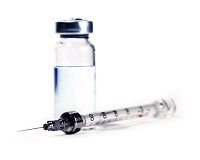Opioid Abuse Driving Hep C Spike
Hepatitis C infection has increased more than 3-fold in parts of the US, a CDC research team reports. Their analysis tracks the spike to an increase in drug users injecting opioids.

Opioid abuse involving injecting the illegal drugs is likely behind a significant spike in hepatitis C (HCV) infection, a team of US Centers for Disease Control and Prevention (CDC) reports.
From 2006 through 2012 there has been a national increase in acute HCV infection. That increase has been largest in the states in central Appalachia, where there was a more than 3-fold spike (364% increase) in HCV infection.
CDC researchers looked at available behavioral and demographic data in case reports in conjunction with drug treatment admissions data from the Treatment Episode Data Set-Admissions database. They focused on people under age 30 who live in Kentucky, Tennessee, Virginia and West Virginia.
Reporting in the May 8 issue of the CDC’s Morbidity and Mortality Weekly Report, Jon Zibbell, PhD and colleagues say that young people who live outside urban areas comprise most of the new HCV cases and that where risk information was available, 73% cited injection drug use as a principal risk.
Though cases of acute HCV infection were found both in urban and non-urban areas, the increase was higher outside the cities.
During the same period, the 4 states also saw an increase of 21.1% in people admitted for opioid addiction treatment and a rise in drug users who injected the opioids.
“Taken together these increases indication a geographic intersection among opioid abuse, drug injecting and HCV infection in central Appalachia and underscore the need or integrated health services in substance abuse treatment settings to prevent HCV infection and ensure that those who are infected receive care.” The researchers did not try to extrapolate their findings nationally but noted that “similar increases among persons with analogous demographic characteristics have been reported over the period (2006-2012) in Massachusetts, Wisconsin, and upstate New York.
Most of the drug users were white, and 49.5% were male.
Since injection drug use also carries a higher risk of getting HIV, the researchers expressed concern that these patients get tested for that virus as well as getting help with their substance abuse problems.